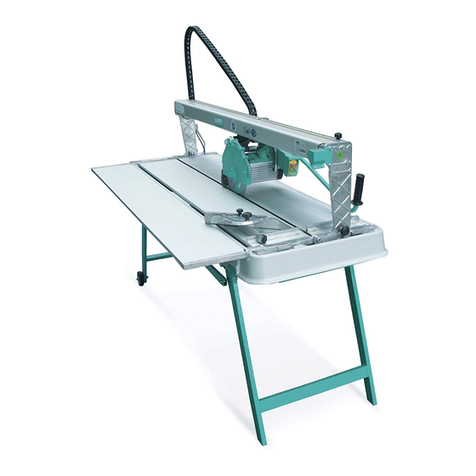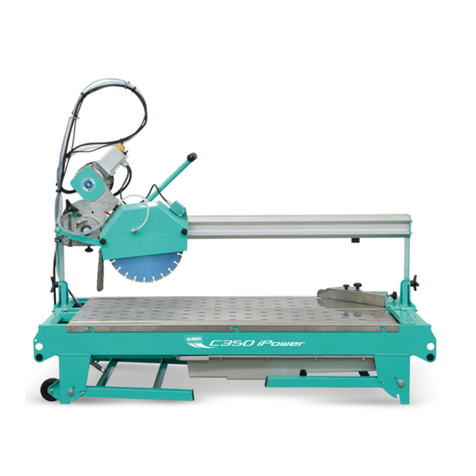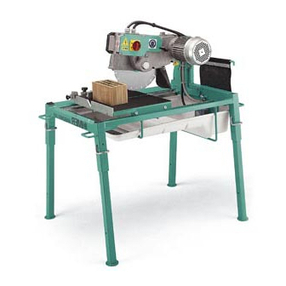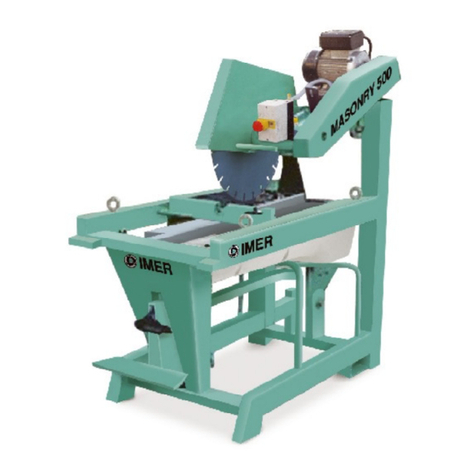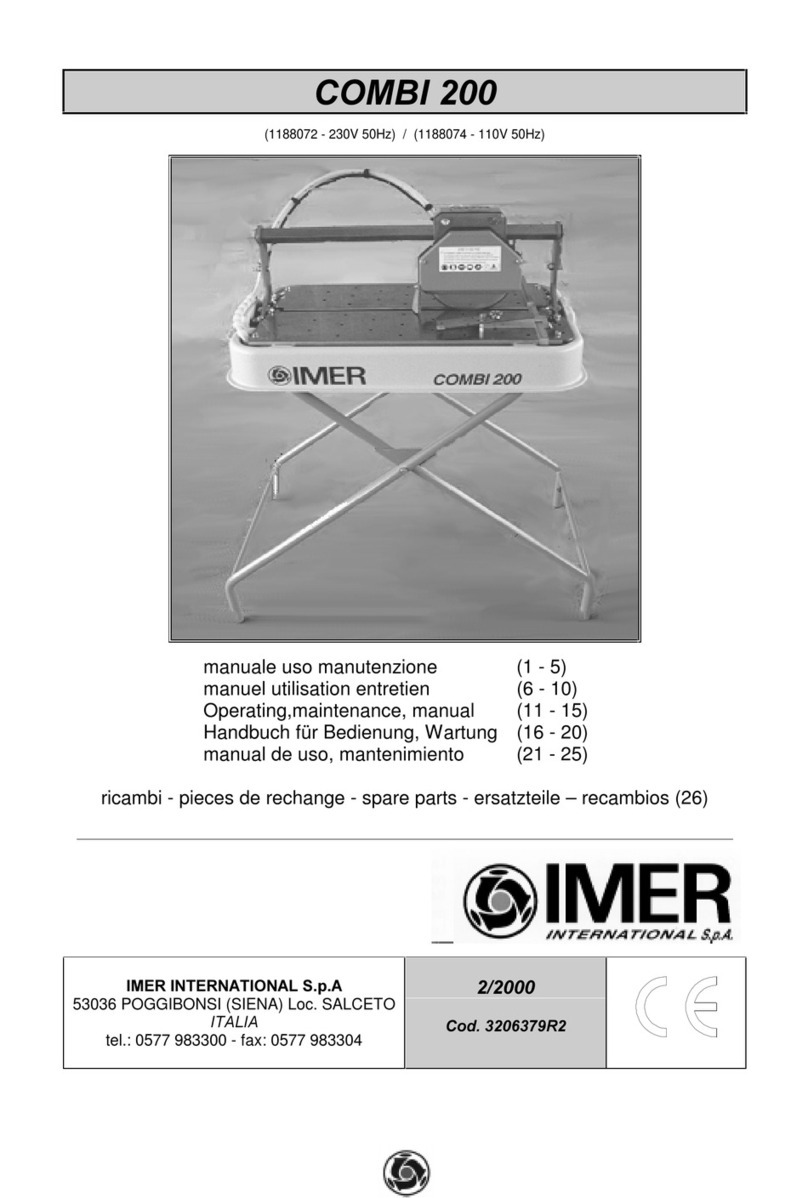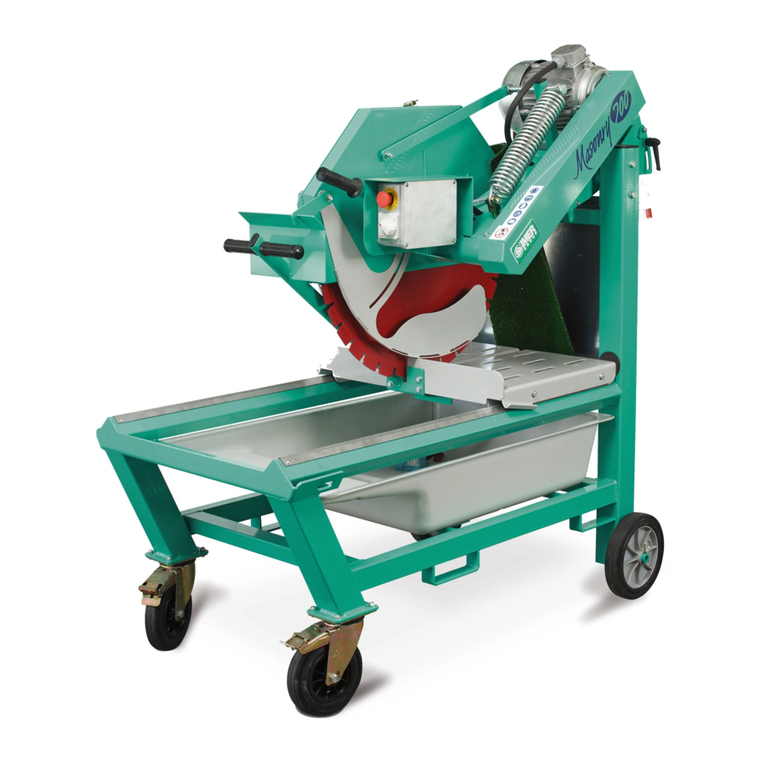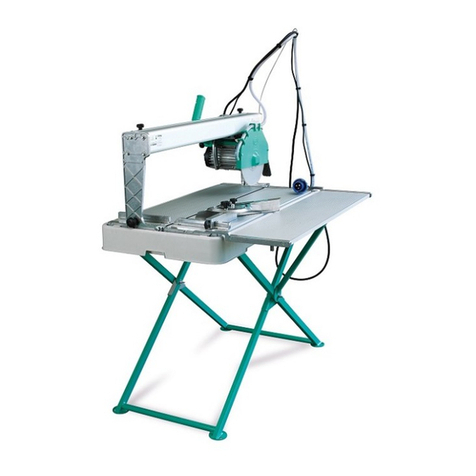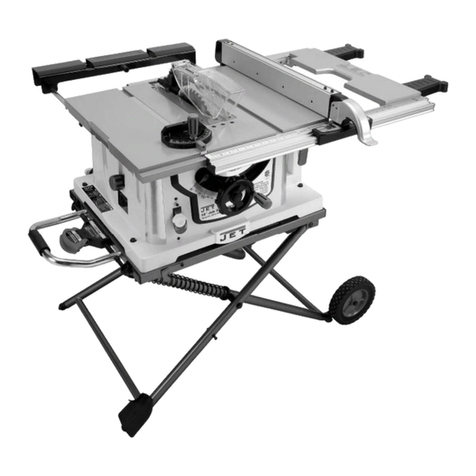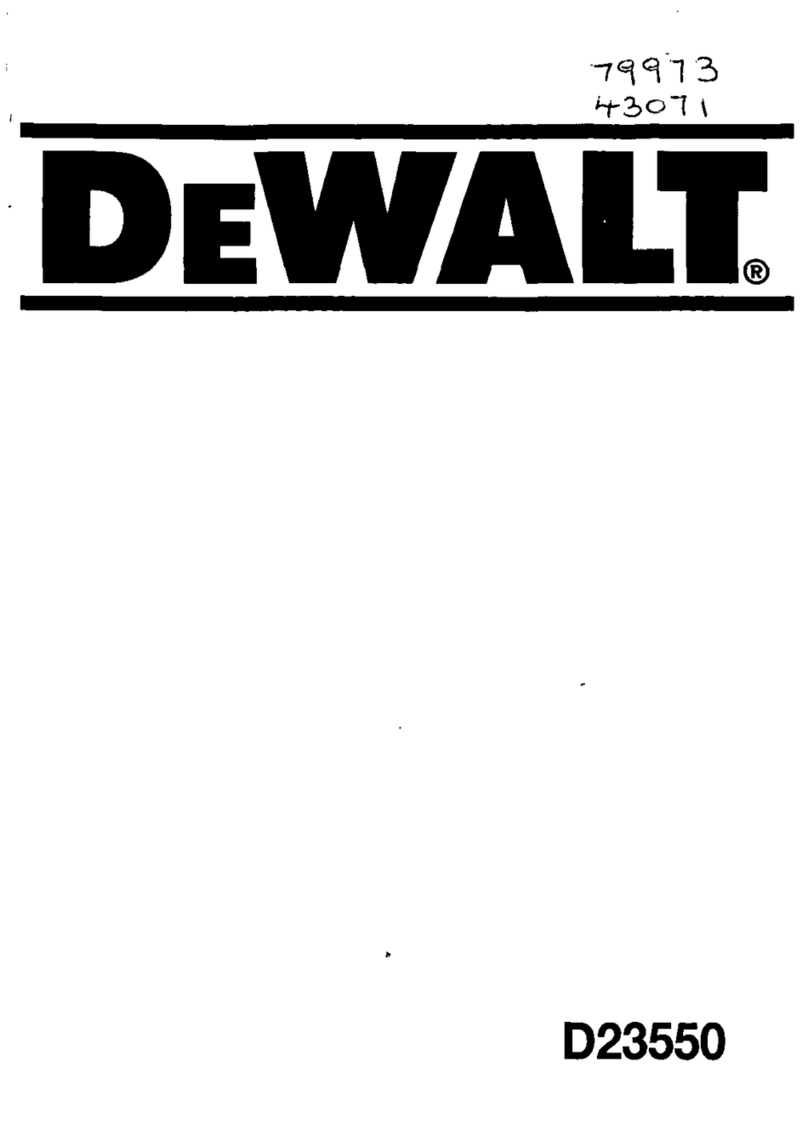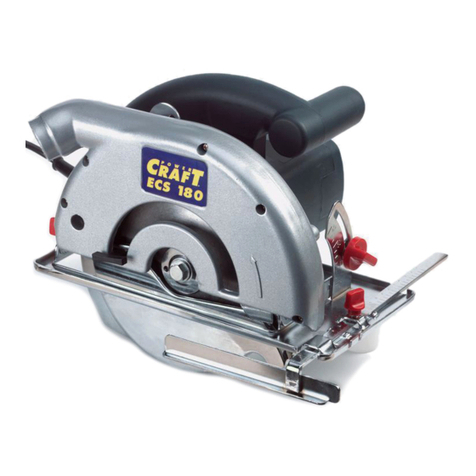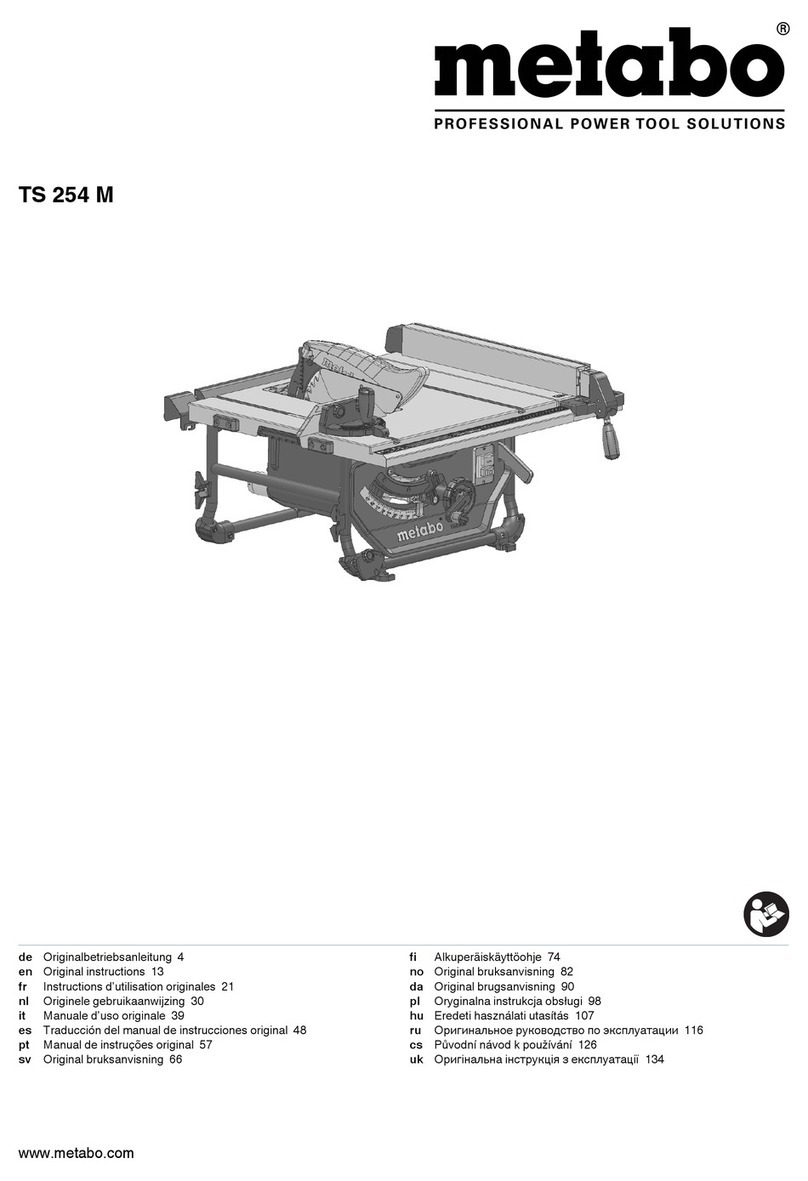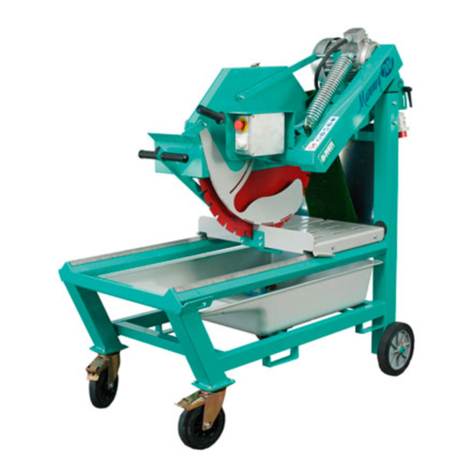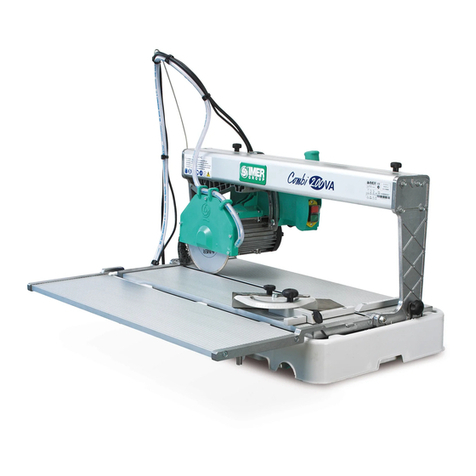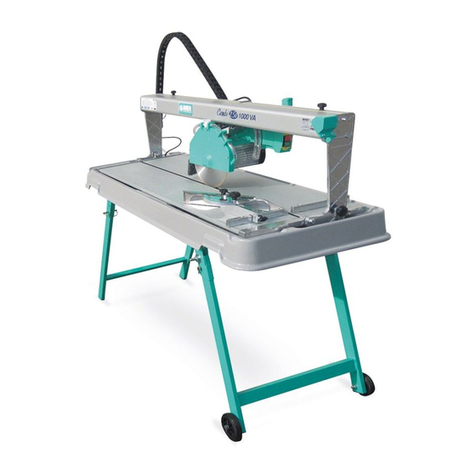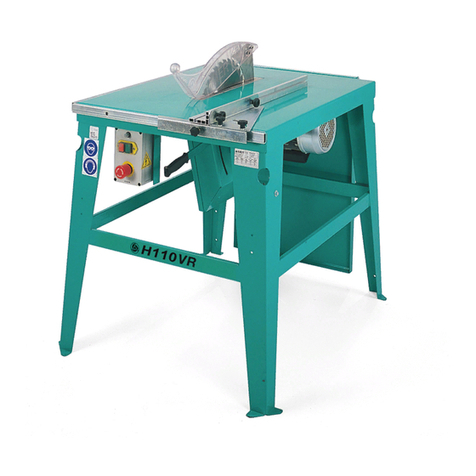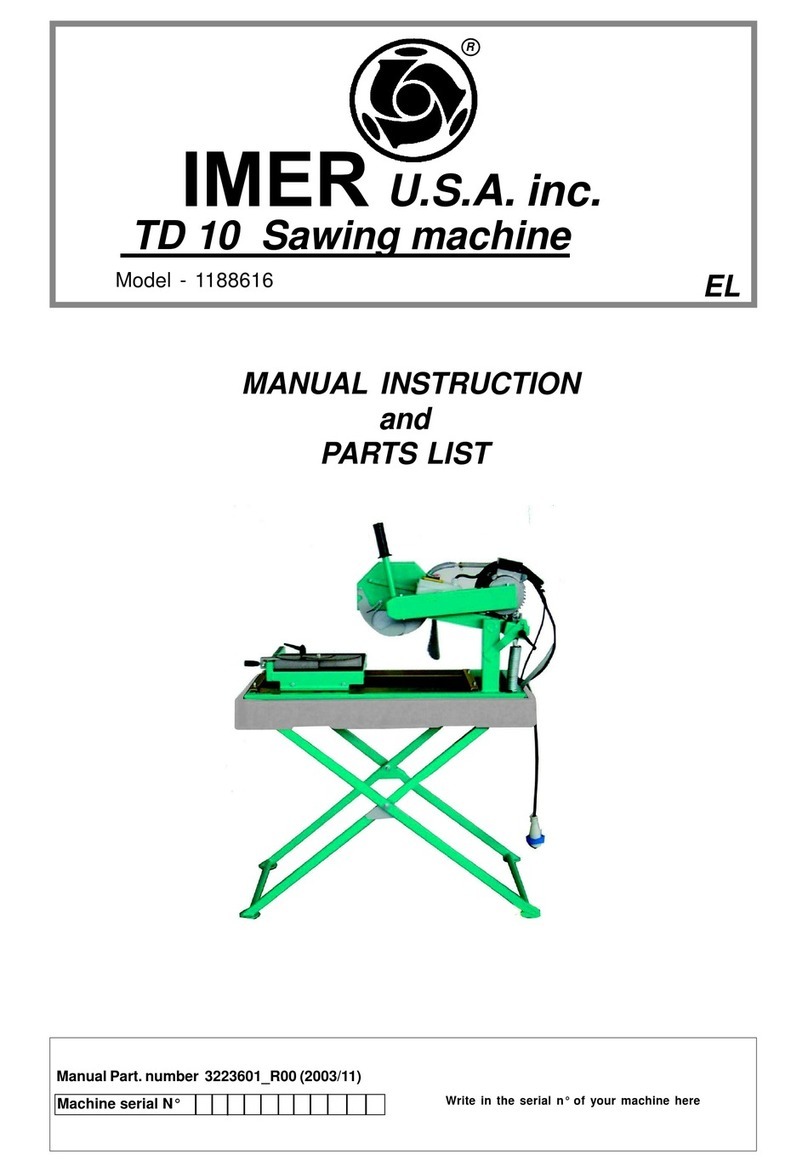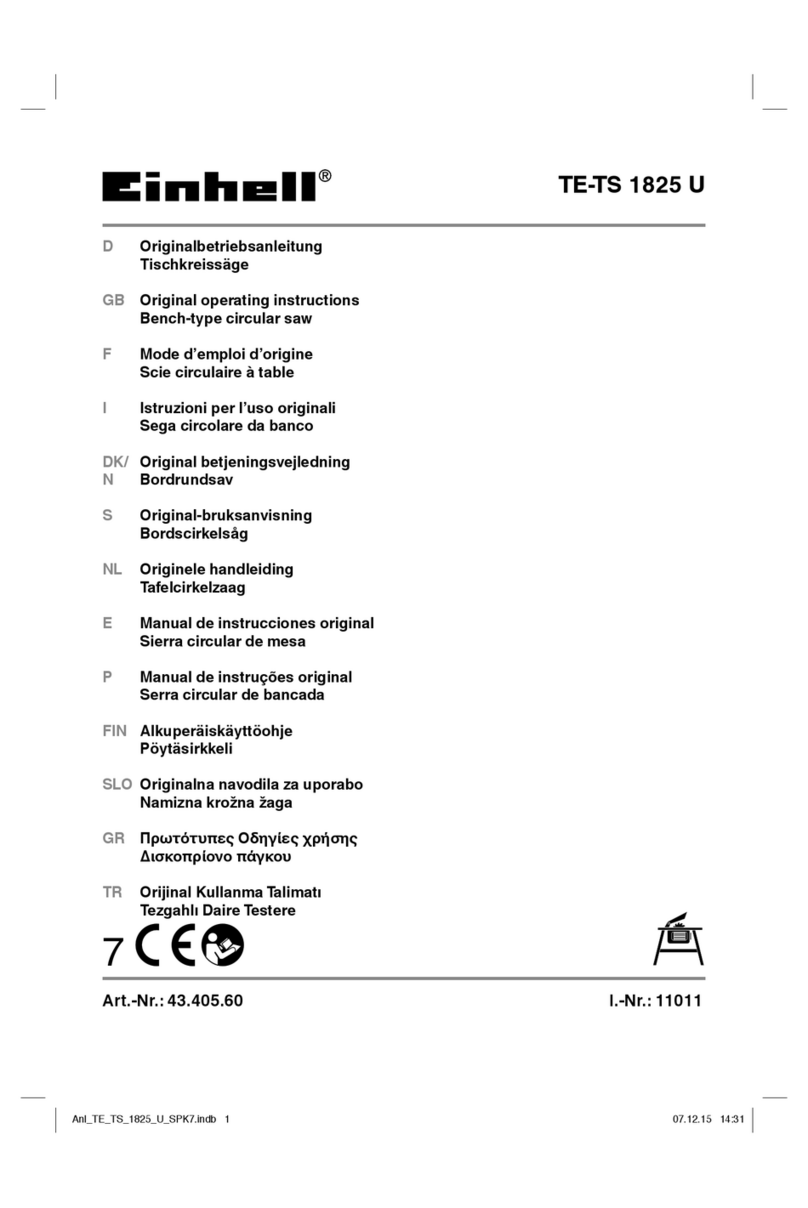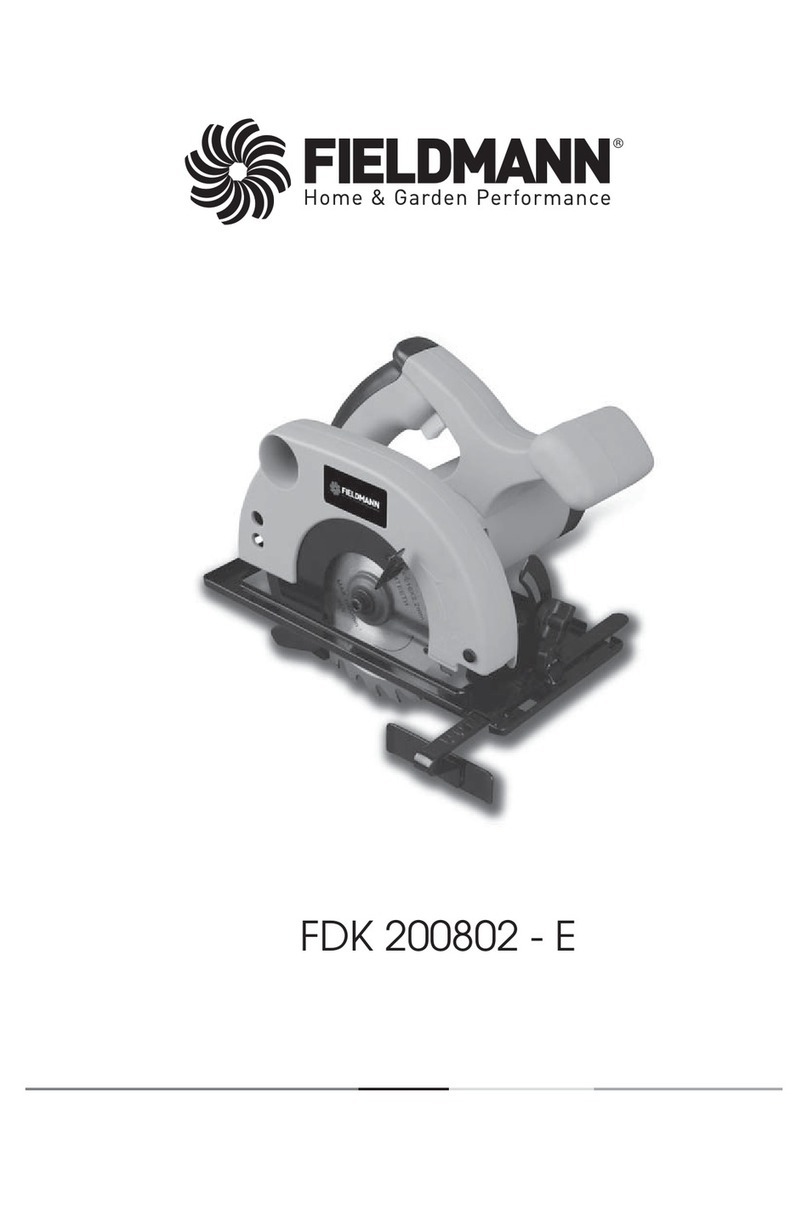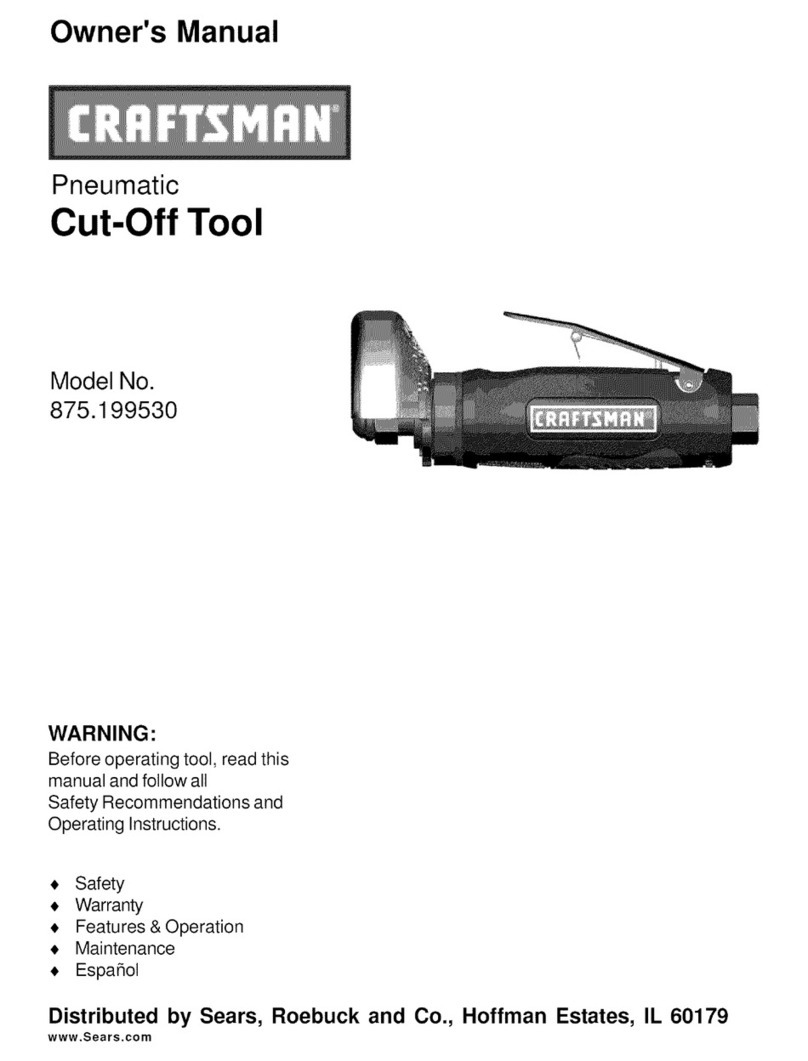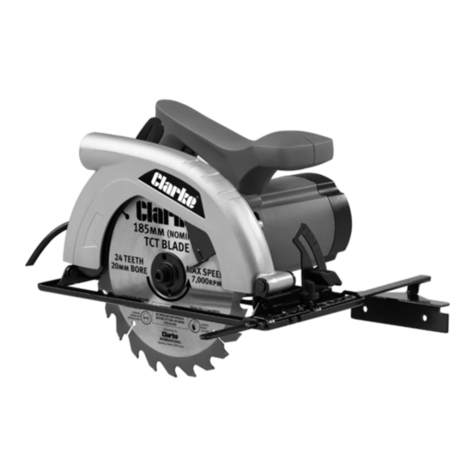
19
MASONRY 350
IMER INTERNATIONAL S.p.A.
5LI &RG , ) *% ' ( 1RWH
5LGXWWRUH 5pGXFWHXU 5HGXFHU 8QWHUVHW]XQJVJHWULHEH 5HGXFWRU
5LGXWWRUH 5pGXFWHXU 5HGXFHU 8QWHUVHW]XQJVJHWULHEH 5HGXFWRU
18. RICAMBI :Per tutti gli ordini dei pezzi di ricambio vogliate indicare: 1 - Tipo di macchina. 2 - Numero di codice e di riferimento collocato in corrispondenza
di ogni definizione. 3 - Numero di serie e anno di costruzione riportato sulla targhetta della macchina. SIMBOLOGIA: Intercambiabilità (esempio): Fino alla macchina
matricola N° 5240 è stato installato il rif.1 cod.3204530,dalla mcchina matricola N° 5241 è stato installato il rif.1.1 cod.3204520. Il rif.1.1 è intercambiabile ( ) con il rif.1.
Non sono intercambiabili i rif.1 e rif.1.1 se in tabella è presente il simbolo ( ).
18. PIECES DE RECHANGE :Pour toutes les commandes de pièces de rechange, veuillez indiquer: 1 - Le Type de machine 2 - Le Numéro de code et de référence
se trouvant en face de chaque définition 3 - Le Numéro de série et l'année de construction se trouvant sur la plaquette d'identification de la machine
SYMBOLOGIE: Intercambiabilità (exemple):Jusqu'à la machine matricule N° 5240, nous avons installé la réf. 1 code 3204530; à partir de la machine matricule N° 5241, nous
avons installé la réf. 1.1 code 3204520. La réf. 1.1 est interchangeable ( ) avec la réf.1. Les réf. 1 et réf. 1.1 ne sont pas interchangebles si le symbole ( ) n'est pas sur le
tableau.
18. SPARE PARTS :All orders for spare parts must indicate the following: 1 - Type of machine.2 - Part number and position number of each part.3 - Serial number
and year of manufacture reported on the machine's identification plate.
SYMBOL: Interchangeability (example):Pos..1 P.n. 3204530 was installed on machincs up to N° 5240 and Pos.1.1 P.n. 3204520 installed on machine N° 5241 onwards. Pos.
1.1 is interchangeable ( ) with Pos. 1.Pos. 1 and Pos. 1.1 are not interchangeable if the ( ) symbol appears in the table.
18. ERSATZTEILE: Für Ersatzteilbestellungen bitte die folgenden Angaben machen: 1) Maschinentyp 2) Jeweils zugeordnete Art.-Nr. und Positionsnummer 3)
Seriennummer und Baujahr (Angabe auf dem Maschinenschild)
SYMBOLE: Austauschbarkeit (Beispiel):Bis zur Maschinenummer 5240 ist Ref. 1 Cod. 3204530 und ab Maschinennummer 5241 ist Ref. 1.1 Cod. 3204520 installiert worden.
Ref. 1.1 und Ref. 1 sind austaschbar ( ). Ref. 1 und Ref.1.1 sind nicht austauschbar, wenn das Symbol ( ) angegeben ist.
18. PIEZAS DE RECAMBIO :Para pedir una pieza de recambio hay que indicar siempre: 1 -El tipo de máquina. 2 -Los números de gódigo y de referencia
indicados en correspondencia de cada definición. 3 -El número de serie y el año de construcción indicados en la placa de la máquina.
SIMBOLOGIA : Intercambiabilidad (ejemplo): Hasta el equipo con matrìcula N° 5240, se ha instalado la pieza con ref. 1 y còd. 3204530; a partir de la màquina con matrìcula
N° 5241, se ha instalado la pieza con ref. 1.1 y còd. 3204520. La pieza con ref. 1.1 se puede intercambiar ( ) con la pieza con ref. 1. Si en tabla se halla presente el sìmbolo
( ), las piezas co referencia 1 y 1.1 no son intercabiables.
$. 7$90217$**,27(/$,20217$*(&+$66,6)5$0($66(0%/<5$+0(10217$*(0217$-('(%$67,'25
5,) &2' , ) *% ' ( 127(
&$55(//2 &+$5,27 &$55,$*( :$*(1 &$552
9,7( 9,6 %2/7 6&+5$8%( 7251,//2 0;
9,7( 9,6 %2/7 6&+5$8%( 7251,//2 0;
&86&,1(772 528/(0(17 %($5,1* /$*(5 &2-,1(7( 56
'$'2$872%/2&&$17( (&528'(6Ó5(7 6(/)/2&.,1*
187 6(/%676,&+(51'(
0877(5 78(5&$
$872%/248($17( 0
5827$ 528( :+((/ 5$' 58('$
9,7( 9,6 %2/7 6&+5$8%( 7251,//2 0[
*8,'$ */,66,(5( *8,'(%$5 )h+581* *8Ë$
$'(6,92%$7787$
6,1,675$ $'+(6,)%87e(
*$8&+( /()7)(1&(
$'+(6,9(/$%(/ 6&+,/'/,1.(5
$16&+/$* $'+(6,92723(
,=4 8( 5 ' 2
$'(6,92%$7787$
'(675$ $'+(6,)%87e(
'52,7( 5,*+7)(1&(
$'+(6,9(/$%(/ 6&+,/'5(&+7(5
$16&+/$* $'+(6,92723(
'(5(&+2
5,9(67,0(172*200$ 5(9(7(0(17,1
&$287&+28& 58%%(5
&2$,7,1* *800,
%(./(,'81* *20$5(9(67,0,(172
526(77$ 521'(//( :$6+(5 817(5/(*6+(,%( $5$1'(/$
3(512 3,927 3,1 =$3)(1 3(512
*$0%$ 3,(' )8% 3$7$
%5$&&,202%,/( %5$6 527$5<%/$'(
$50 $50
'5(+6&+$8)(/ %5$=2
68332572 6833257 6833257 817(5/$*( 623257(
'$'2 (&528 187 0877(5 78(5&$ 0
7$332 %28&+21 3/8* 672))(1 7$321
9,7( 9,6 6&5(: 6&+5$8%( 7251,//2 0;
3$5$6&+,==, 3527(&7,21
e&/$%286685(6 635$<*8$5' *800,635,7=6&+8
7= 3527(&&,Ï1&2175$
6$/3,&$'85$6
7(/$,2 &+$66,6 )5$0( 5$+0(1 %$67,'25
&2192*/,$725( 72%2**$1 :$7(55812))
75$< )g5'(5(5 75$163257$'25
9,7( 9,6 6&5(: 6&+5$8%( 7251,//2 $872)257(;
9$6&$ &89( '580 0,6&+:$11( 5(&,3,(17(
7$332 %28&+21 3/8* 672))(1 7$3Ï1
3203$$&48$ 3203(($8 :$7(53803 :$66(53803( %20%$'(/$*8$ 9+]
9+]
78%2 78%( 78%( 52+5 78%2
9,7( 9,6 %2/7 6&+5$8%( 7251,//2 0;
'$'2 (&528 187 0877(5 78(5&$ 0
%/2&&$**,27(67$ %/2&$*(7(7( +($'&/$03 9(55.23)7 %/248(2&$%(=$
9,7( 9,6 6&5(: 6&+5$8%( 7251,//2 0[
9,7( 9,6 6&5(: 6&+5$8%( 7251,//2 0;
/(9$$6&$772 /(9,(5 /(9(5 +(%(/ 3$/$1&$
*21,20(752 *21,20Ê75( *21,20(7(5 :,1.(/0(66(5 *21,Ï0(752
68332572),66$**,2
*8,'( 6833257*/,66,(5( *8,'(%$5
6833257 )8+581*
,1 7( 5/ $ * ( *8,$683257(
6/,77$&$55(//2 &+$5,27*/,66,Ê5( 752//(<6/,'( .$55(6&+/,77(1 &$552&255('(5$
526(77$ 521'(//( :$6+(5 817(5/(*6&+(,%( $5$1'(/$ [
'$'2 (&528 187 0877(5 78(5&$ 0
3,$675$%/2&&$**,2 3/$48('(
%/2&&$*( /2&.3/$7( %/2&.,(53/$77( 3/$&$%/248(2
320(//2 32,*1e( .12% .123) 3202 0
%/2&&$**,2
&$55(//2 &+$5,27&$/$*( 752//(<
&/$03,1* .$55(
(,163$1181* &$552%/248(2
9,7( 9,6 6&5(: 6&+5$8%( 7251,//2 0[
'$'2 (&528 187 0877(5 78(5&$ 0
(&&(175,&2 (;&(175,48( &$0 (;=(17(5%8&+6( (;&e175,&2
9,7( 9,6 6&5(: 6&+5$8%( 7251,//2 0;
'$'2 (&528 187 0877(5 78(5&$ 0




















